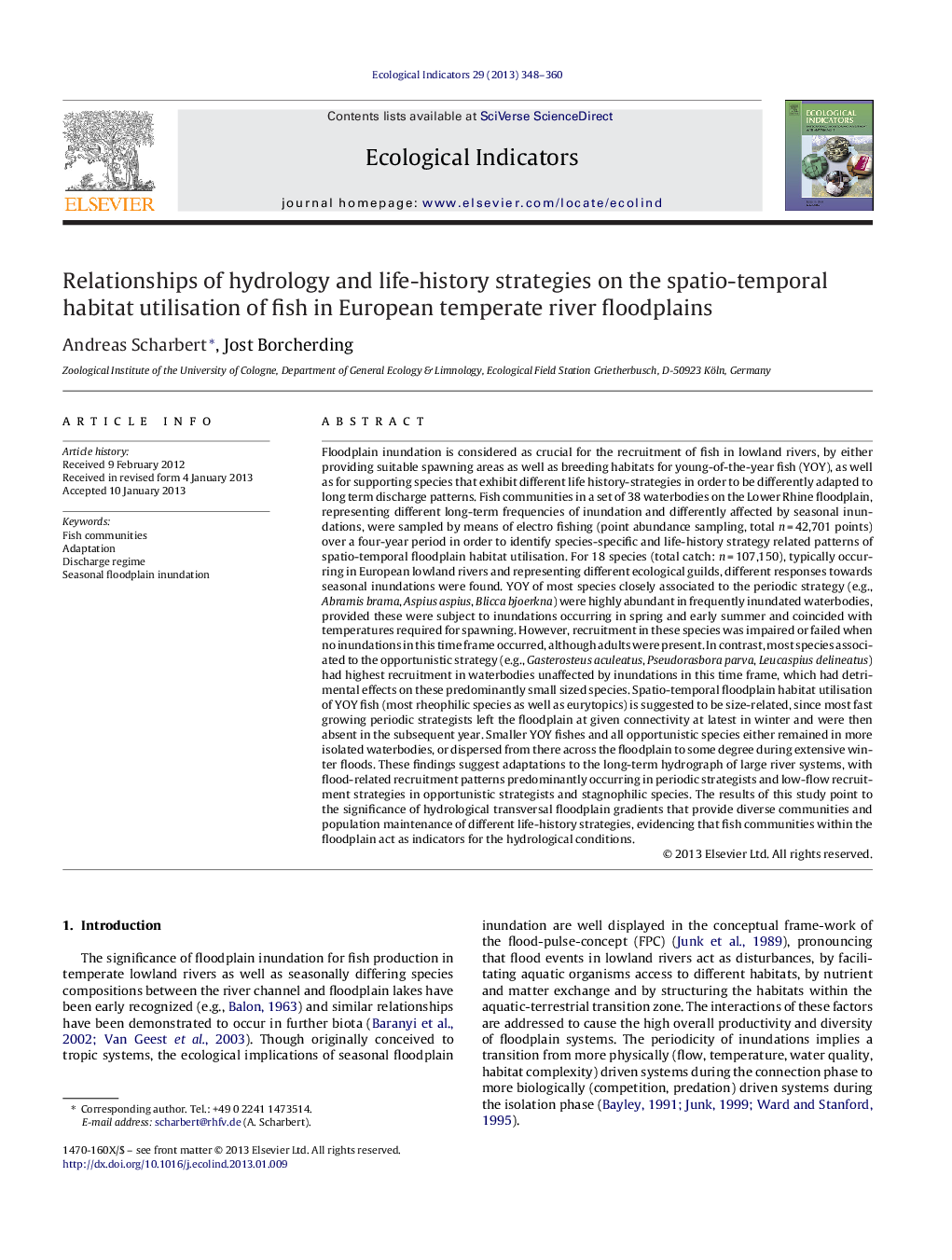| Article ID | Journal | Published Year | Pages | File Type |
|---|---|---|---|---|
| 4373491 | Ecological Indicators | 2013 | 13 Pages |
Floodplain inundation is considered as crucial for the recruitment of fish in lowland rivers, by either providing suitable spawning areas as well as breeding habitats for young-of-the-year fish (YOY), as well as for supporting species that exhibit different life history-strategies in order to be differently adapted to long term discharge patterns. Fish communities in a set of 38 waterbodies on the Lower Rhine floodplain, representing different long-term frequencies of inundation and differently affected by seasonal inundations, were sampled by means of electro fishing (point abundance sampling, total n = 42,701 points) over a four-year period in order to identify species-specific and life-history strategy related patterns of spatio-temporal floodplain habitat utilisation. For 18 species (total catch: n = 107,150), typically occurring in European lowland rivers and representing different ecological guilds, different responses towards seasonal inundations were found. YOY of most species closely associated to the periodic strategy (e.g., Abramis brama, Aspius aspius, Blicca bjoerkna) were highly abundant in frequently inundated waterbodies, provided these were subject to inundations occurring in spring and early summer and coincided with temperatures required for spawning. However, recruitment in these species was impaired or failed when no inundations in this time frame occurred, although adults were present. In contrast, most species associated to the opportunistic strategy (e.g., Gasterosteus aculeatus, Pseudorasbora parva, Leucaspius delineatus) had highest recruitment in waterbodies unaffected by inundations in this time frame, which had detrimental effects on these predominantly small sized species. Spatio-temporal floodplain habitat utilisation of YOY fish (most rheophilic species as well as eurytopics) is suggested to be size-related, since most fast growing periodic strategists left the floodplain at given connectivity at latest in winter and were then absent in the subsequent year. Smaller YOY fishes and all opportunistic species either remained in more isolated waterbodies, or dispersed from there across the floodplain to some degree during extensive winter floods. These findings suggest adaptations to the long-term hydrograph of large river systems, with flood-related recruitment patterns predominantly occurring in periodic strategists and low-flow recruitment strategies in opportunistic strategists and stagnophilic species. The results of this study point to the significance of hydrological transversal floodplain gradients that provide diverse communities and population maintenance of different life-history strategies, evidencing that fish communities within the floodplain act as indicators for the hydrological conditions.
